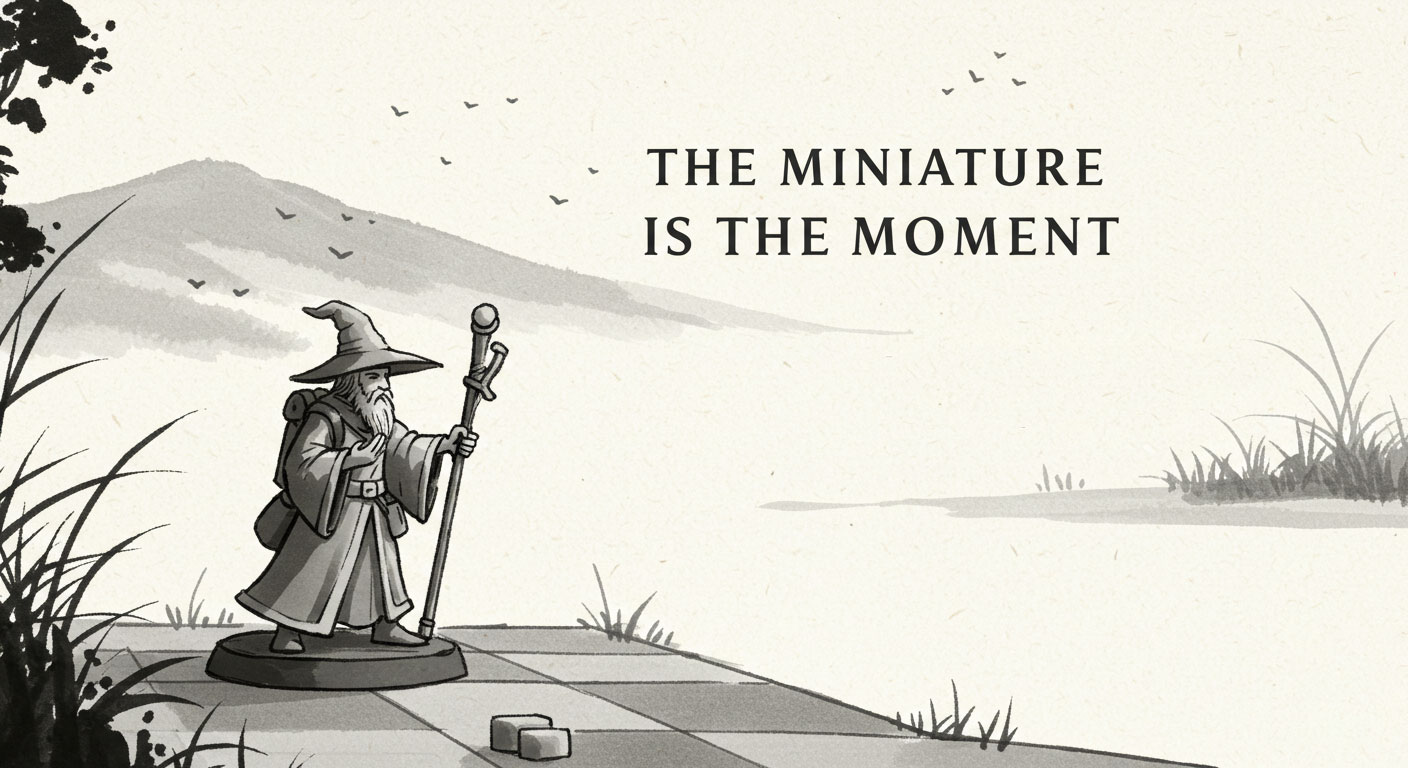A friend said something to me recently that stopped me in my tracks:
“I love painting the minis as much as I love playing with them..”
It’s easy to think of painting as just the prelude to gaming, projects to accomplish before the fun begins. But for many hobbyists, those quiet hours at the painting temple are the fun. The brush becomes as meaningful as the dice. This blog explores how mindful miniature painting isn’t just a creative act, it’s a mediative one. And how traditional Japanese art forms like Shodō, Sumi-e, and Kintsugi can help us reconnect with the joy of being fully present in the process.
Shodō – The Calm of Commitment
In Shodō, the Japanese art of calligraphy, each brushstroke is made with intention. There is no erasing. No second chances. That might sound intimidating. But Shodō isn’t about perfection – it’s about presence. Calligraphers commit fully to each movement, trusting their preparation and letting go of hesitation. It’s an exercise in flow: muscle memory meets mindfulness. Miniature painting can offer the same reward. The edge highlight on a cloak. The dot of a pupil. The subtle blend of skin tone. When we slow down and commit to the moment, the act of painting becomes more than a step, it becomes a rhythm.
Sumi-e – Simplicity with Soul
Sumi-e, or ink wash painting, values restraint over detail. Artists use just a few deliberate strokes to capture the essence of a subject. The philosophy encourages us to move past fussing and overthinking – to paint what we feel, not just what we see. In the miniature hobby, that might mean resisting the urge to fill every surface with colour and instead letting textures, shadows, and shapes breathe. Let the miniatures speak through suggestion, not saturation.
Kintsugi – Beauty in Mistakes
Kintsugi is the art of repairing broken pottery with lacquer and gold, highlighting flaws instead of hiding them. It teaches us to embrace imperfection – to see mistakes not as failures but as part of the object’s history. In painting terms? Smudges. Missteps. Experiments gone sideways. These are not reasons to strip a model, they’re opportunities to adapt and discover.
The Process Is the Hobby
Japanese meditative arts offer more than aesthetic inspiration, they model a way of being with our creative work.
- Shodō teaches us to move with trust.
- Sumi-e teaches us to let go of excess.
- Kintsugi teaches us to accept the unexpected.
And all of them ask us to value the process as much as the product. Because whether you’re painting to game or gaming to have something to paint, the real reward is in the doing. The stillness. The focus. Mindful miniature painting.
“The miniature is the moment.”
Tools That Honour the Process
At Anarky Creations, we believe your tools should support the experience too, not just the outcome. To make every paint pass more tactile, more intuitive, more connected. For some customers our textured dry palette is more than a tool, it’s part of the ritual. Just as sumi-e begins by grinding ink on a stone to prepare both materials and thoughts, using a dry palette invites a similar mindset. Inviting you to engage with the medium intentionally, to feel the paint take shape and to begin your paint pass with intention. With or without a dry palette, your painting table can be your route to mindfulness.

